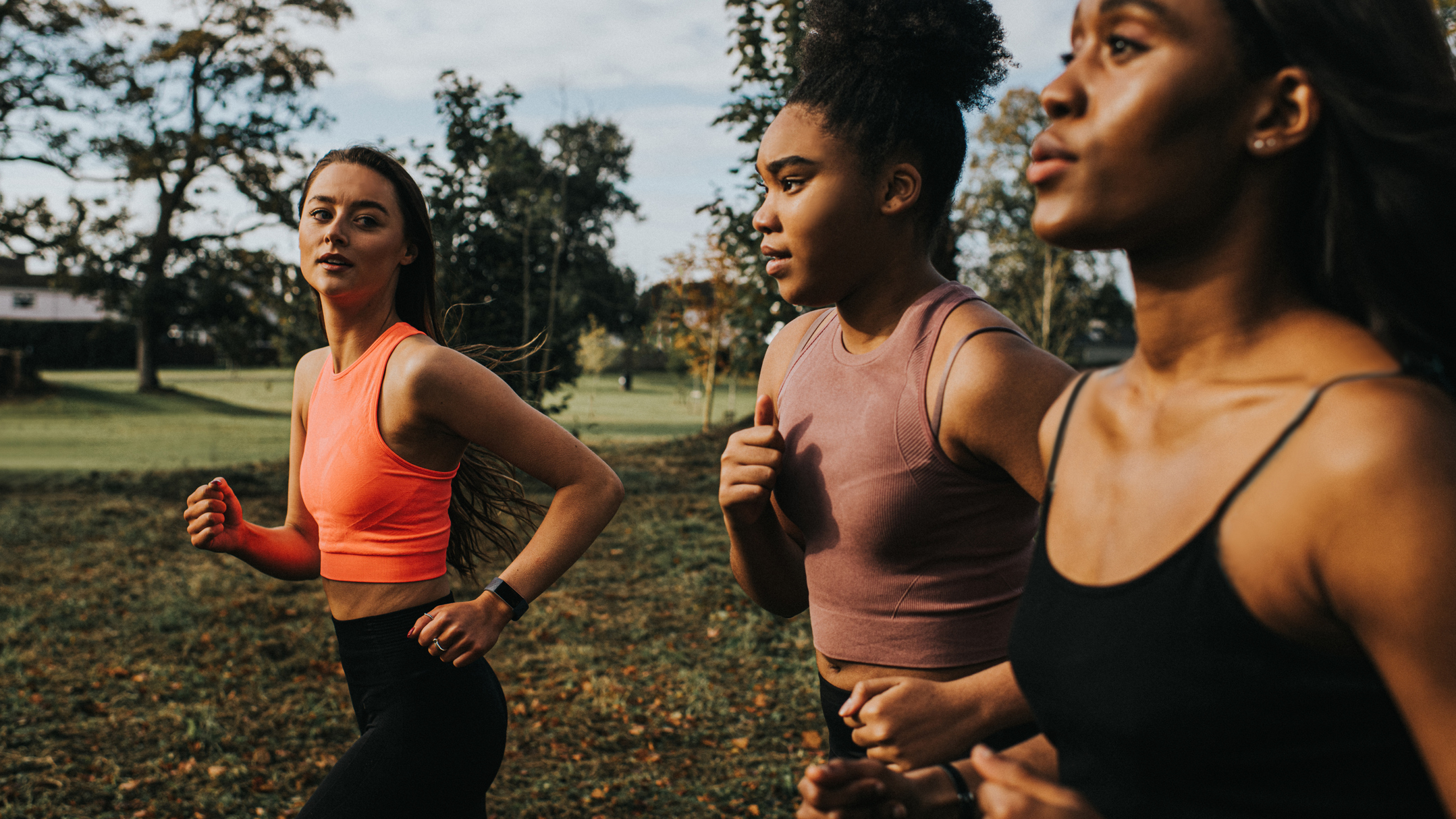Cross-training for runners: why it's important and where to start
Mixing up your runs with other activities can boost your running and help avoid injury


Cross-training for runners brings huge benefits, but it's something that's all-too-often disregarded in favor of a training schedule made up purely of runs.
Three or four running sessions a week can result in strong legs and gains in cardiovascular endurance. But concentrating purely on running can eventually result in injury and fatigue.
Many runners will also begin to experience boredom and a dip in motivation as they struggle to force themselves to lace up the best running shoes for men or the best running shoes for women and head out to run the same route for the third time that week.
It’s therefore important as a runner to consider cross training. To see better results, many professional athletes build in regular training sessions that focus on other sports and activities.
Alex Parren, a personal trainer and running coach for Meglio, is an advocate of cross training for runners and the benefits it can bring to running performance.
But what do we mean by the term 'cross training'? “Put simply, cross training for runners is any form of cardiovascular exercise that isn’t running,” she says. This could include activities such as HIIT workouts or Zumba as well as sports such as rowing, cycling, swimming or even skiing.
She’s also keen to stress that cross training should not to be confused with CrossFit, which is a specific form of exercise. “It’s also not to linked to the machine at the gym that some may call a cross trainer, otherwise known as an elliptical machine.”
Start your week with achievable workout ideas, health tips and wellbeing advice in your inbox.
Why cross training matters for runners
It’s a well-known fact that the repeated motion of running puts stress on your body. If you do enough of it, especially on the roads, it can quickly lead to injuries (such as IT band syndrome) and problems with your joints.
As well as building in a regular strength and conditioning programme, many coaches recommend regular cross training too.
“The purpose of cross training is to complement your training in order to make you a better runner,” says Parren. “This means strengthening your muscles, improving your cardiovascular fitness and boosting your stamina.”
It also allows your joints to recover while still improving your overall fitness. “Lifting weights and yoga are both excellent training tools, but they don’t raise your heart rate to aerobic levels so they do not count as cross training for running and should be kept as separate components of your weekly regime,” adds Parren.
What are the benefits of cross training?
The first and most important reason to start cross training is injury prevention.
“Injuries are common for runners, and can be a nightmare, as it stops you running,” says Parren. “They are often caused by too much running volume and causing stress on the body. Cross training allows your body to actively recover from the repetitive strain of running while still improving your fitness.”
Cross training also works your muscles in different ways and different planes of movement. “Many injuries are caused by muscle imbalances and weaknesses, so cross training allows your body to move in a different way to when it is running, and encourages your muscles to coordinate for more efficient movement.”
Of course, injuries are a threat when doing any sort of exercise, so to minimize the possibility of injuring yourself during cross training, it's important to think about form and footwear - running shoes are not usually suitable for these activities. Take a look at our pick of the best cross training shoes for options that offer the stability needed.
Another benefit that runners may not be aware of is that it also improves your aerobic capacity.
“It’s easy to think that by running at maximum effort 3 or 4 times a week you’ll get fitter, but that is a sure-fire way to burn out,” says Parren.
“Cross training activities are generally lower intensity and impact than running, which means your heart rate will stay more steady and you’ll benefit from the endurance-building effects of a lower impact training session.”
What are the best forms of cross training for runners?
- Jump rope
Jump rope is a great option for runners, and has the added benefit of being one of the best exercises for weight loss, if that is a concern.
“It’s easy to do at home and will get your heart rate up and work key muscle groups associated with running,” says Parren. “If you suffer from weak calves in particular, the motion of bouncing from your ankles when skipping will strengthen your calf muscles and improve mobility in your ankles, which will in turn improve your running form.”
- Cycling
Whether you do it in the open air or at home on one of the best exercise bikes, cycling is ideal for runners.
That's because it works many of the same muscle groups as running – notably the legs, but also the core – while remaining low-impact, helping to protect joints such as the ankles and knees.
“A steady cycle will improve your aerobic base and therefore your running performance while reducing your risk of injury and strengthening your body,” says Parren.
- Swimming
Runners should also consider swimming as it uses the entire body and encourages muscle groups to coordinate for optimum movement.
- Hiking
Hiking is another low-impact activity that will get your heart rate up and your cardiovascular system working while helping your body to actively recover.
Cross training is a vital tool to add to your training plan and should be used to supplement your run training. Just once or twice a week is enough, and you will soon begin to see the benefits to the way your body moves and your overall running strength.
Heading out on a hike? Be sure you're carrying one of our best water bottles for hiking.
Howard is a freelance health and fitness journalist and copywriter. He has written for publications including ShortList, Runner’s World, Trail Running, Women’s Running, Red Bulletin, Wareable and Cycling Weekly. He enjoys nothing more than lacing up his trail shoes and heading out to explore new trails. He’s run ultramarathons everywhere from the French Alps and Canadian mountains to the Welsh coast and Peak District. When not running, he’s usually found hitting his local MTB singletrack trails or on a quest to find the country’s best cinnamon bun.
